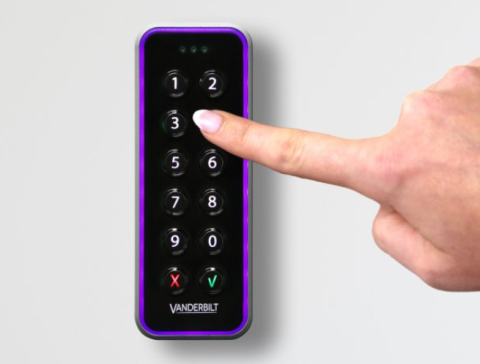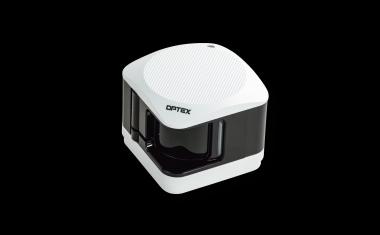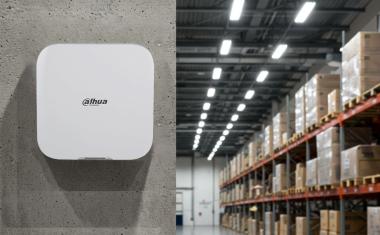Vanderbilt Releases New Highly Secure, Easy-on-the-eye VR Mullion Readers

Vanderbilt announced the release of its new VR mullion card reader. Designed for today’s bright, clean interiors, Vanderbilt’s VR mullion card readers are easy to install, use, and maintain. The reader, with keypad, maximizes the user interaction with arming, access, and messaging that results in enhanced user interaction "at the door."
“One of the really nice design features we have implemented with these new readers,” starts Ross Wilks, Head of Marketing Communications at the company, “is that when the light bar is in rest mode, it can be configured to appear in a color that suits the building’s interior design, or even the company’s corporate colors. There is also automatic mood lighting to ensure the readers are not too bright when it is dark. Subtle design features like that are why we feel the Vanderbilt VR mullion card readers are the slickest on the market,” finishes Wilks.
All models of the readers have three indicator LEDs and a multi-tone buzzer for audio verification. A multi-color light frame enforces access status information. This can be configured to follow the indicator LEDs or any number of different options. Display brilliance is set automatically by an inbuilt light sensor. Aesthetics aside, one of the key features in this new release from Vanderbilt, is the inclusion of the highly secure OSDP (Open Supervised Device Protocol) in the readers to help combat people hacking communications.
“90 percent of all access control cards in the industry today are easily copied and cloned,” states Andrew Fulton, Head of Access Control Product Line at Vanderbilt. “Copied credentials, fake credentials, and card cloners can easily be ordered on the internet. This has created the growing realization that most access control ID systems are therefore totally open to being compromised and seriously vulnerable to attack,” he explains.
“Our solution to these latest hacking vulnerabilities offers a true high-security option that not only secures the cards and readers but also uses the latest OSDP to ensure that sniffing devices cannot be installed behind the reader or along the communications path,” Fulton concludes.
Designed to work with all of Vanderbilt’s systems, including SPC, Omnis, and ACT, they are also vandal resistant and tamper protected.
“Our mullion readers were designed to perform in even the harshest environments. They have been successfully tested to withstand extreme weather conditions, varying from -40c to +70c. The readers are manufactured with a high-quality zinc casted metal frame for extra durability and quality, and have been tested to withstand 5 joules, a feat you just won’t get with plastic readers,” summarizes Wilks.
The configuration of the card readers can easily be achieved by using a configuration card, and secure DESfire encryption keys can be downloaded into the reader. For more information on Vanderbilt’s VR mullion card readers, visit www.vanderbiltindustries.com.















